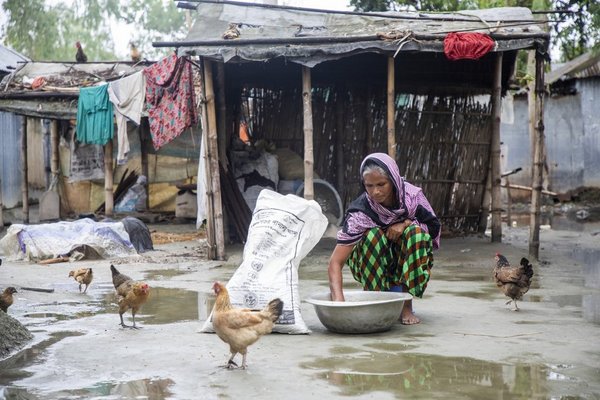 Read this article in French
Read this article in French- Share this article
- Subscribe to our newsletter
Extreme poverty is expected to rise
Global extreme poverty is expected to rise in 2020 for the first time in over 20 years, as the disruption caused by the COVID-19 pandemic compounds the forces of conflict and climate change, which were already slowing down poverty-reduction progress, the World Bank said in October 2020.
The COVID-19 pandemic is estimated to push an additional 88 to 115 million people into extreme poverty this year, with the total rising to as many as 150 million by 2021, depending on the severity of the economic contraction.
Extreme poverty, defined as living on less than USD 1.90 a day, is likely to affect between 9.1 and 9.4 per cent of the world’s population in 2020, according to the World Bank’s biennial Poverty and Shared Prosperity Report. This would represent a regression to the rate of 9.2 per cent in 2017. Had the pandemic not convulsed the globe, the poverty rate was expected to drop to 7.9 per cent in 2020.
Middle-income countries likely to face growing poverty rates
Many of the new poor will be in countries that already have high poverty rates. A number of middle-income countries will see significant numbers of people slip below the extreme poverty line. About 82 per cent of the total will be in middle-income countries, the report estimates. Increasing numbers of urban dwellers are expected to fall into extreme poverty, which has traditionally affected people in rural areas.
Progress was slowing even before the COVID-19 crisis. New global poverty data for 2017 show that 52 million people rose out of poverty between 2015 and 2017. Yet despite this progress, the rate of reduction slowed to less than half a percentage point per year between 2015 and 2017. Global poverty had dropped at the rate of around 1 percentage point per year between 1990 and 2015.
While less than a tenth of the world’s population lives on less than USD 1.90 a day, close to a quarter of the world’s population lives on less than USD 3.20 and more than 40 per cent of the world’s population – almost 3.3 billion people – live on less than USD 5.50.
The COVID-19 crisis may trigger cycles of higher income inequality
The COVID-19 crisis has also diminished shared prosperity – defined as the growth in the income of the poorest 40 per cent of a country’s population. Average global shared prosperity is estimated to stagnate or even contract over 2019-2021 due to the reduced growth in average incomes. The deceleration in economic activity intensified by the pandemic is likely to hit the poorest people especially hard, and this could lead to even lower shared prosperity indicators in coming years.
The prospect of less inclusive growth is a clear reversal from previous trends. Shared prosperity increased in 74 of 91 economies for which data was available in the period 2012-2017, meaning that growth was inclusive and the incomes of the poorest 40 per cent of the population grew.
In 53 of those countries, growth benefited the poorest more than the entire population. Average global shared prosperity (growth in the incomes of the bottom 40 per cent) was 2.3 per cent for 2012-2017. This suggests that without policy actions, the COVID-19 crisis may trigger cycles of higher income inequality, lower social mobility among the vulnerable, and lower resilience to future shocks.
(The World Bank/ile)
Read more at World Bank Website





Add a comment
Be the First to Comment